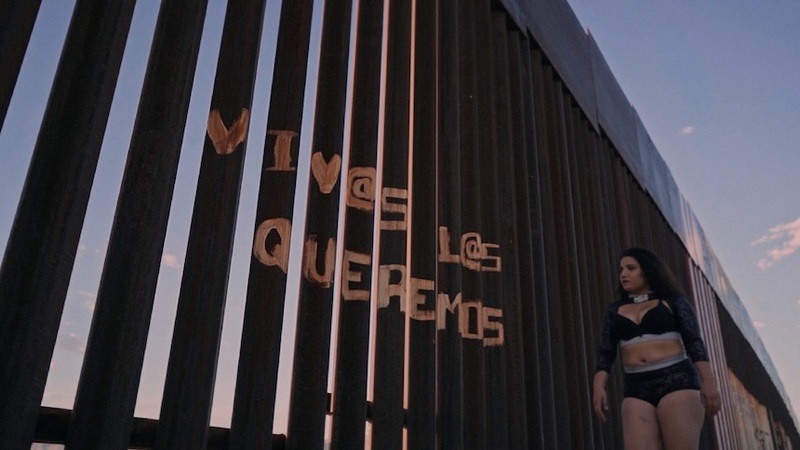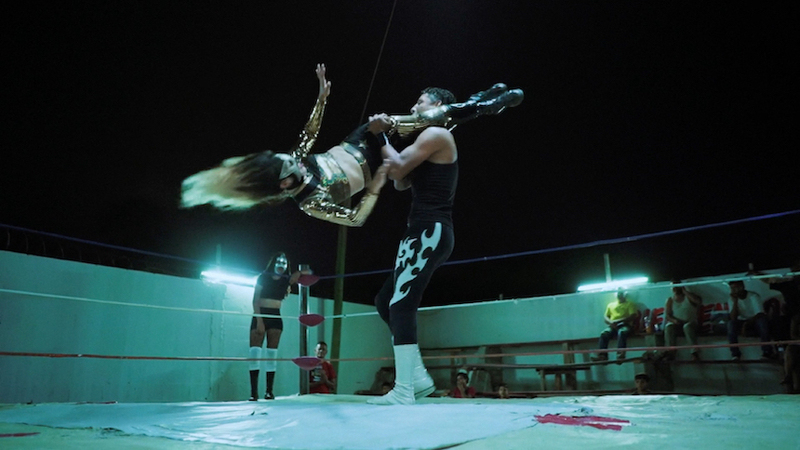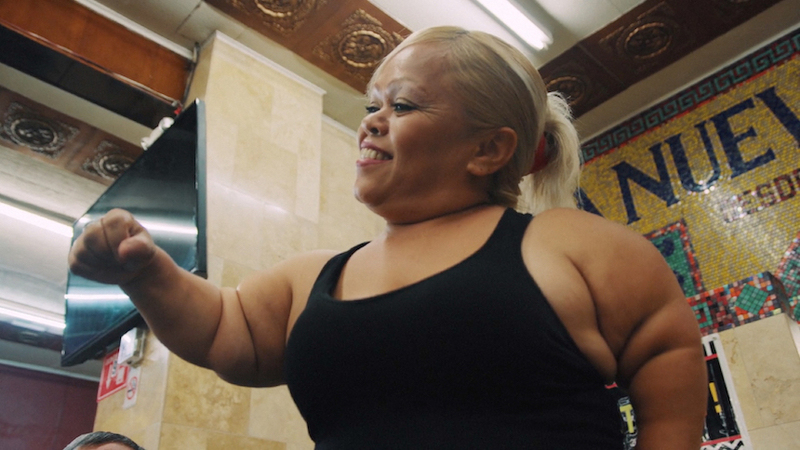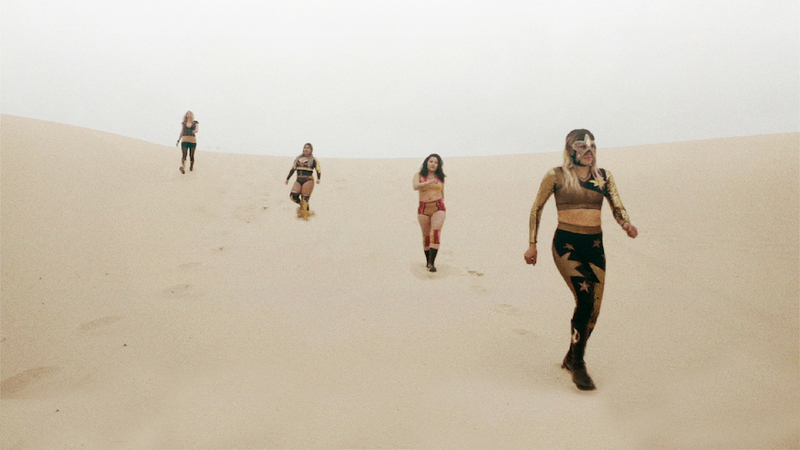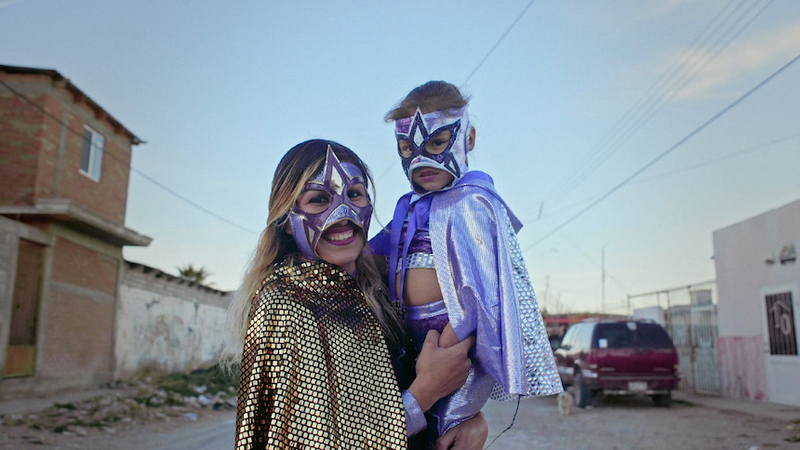SXSW 2021 Interview: LUCHADORAS Directors Paola Calvo And Patrick Jasim On Lucha Libre, Feminism And Ciudad Juárez
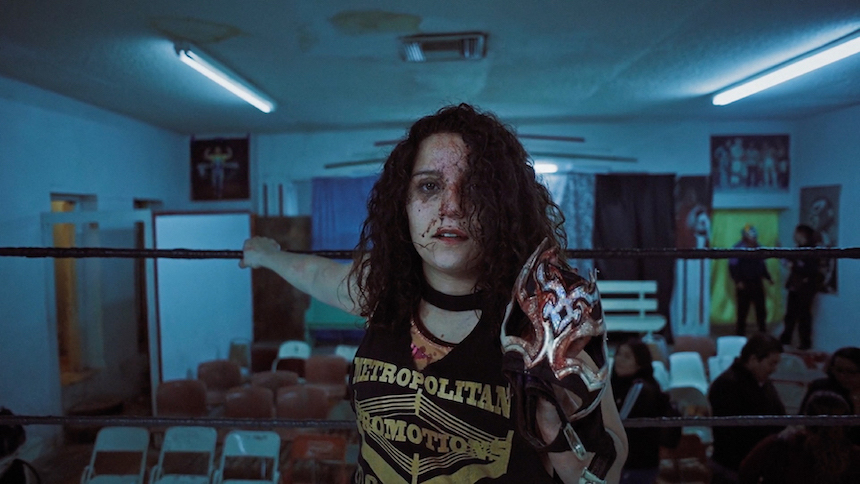
One of the most violent Mexican cities since the first years of the so-called "drug war" is Ciudad Juárez, Chihuahua. In 2010, the most violent year in its history, there were more than 3,000 murders.
The case of "the dead women of Juárez" in the nineties – a dark and notorious chapter of the city – shows the gender violence and impunity that, unfortunately, continues to devastate the country. Ciudad Juárez is not even close to being safe: according to Expansión, during 2020 it was the Mexican city with the most femicides.
The documentary Luchadoras, directed by Paola Calvo and Patrick Jasim, follows three women who practice professional lucha libre (wrestling) in this difficult context.
The wrestler Lady Candy works at a funeral home when she’s not in the ring. Her mind, above all, is on getting an American visa and seeing her little daughters again; the girls' violent father took them to El Paso, Texas, and has cut off all communication with his former partner. At one point we meet the wrestler's mother, who tries to cope with the pain of losing her son to violence years ago.
Outside the ring, Mini Sirenita works in one of the city's maquiladoras (factories). Many cases of murdered or missing women are related to these maquiladoras. Mini Sirenita is a single mother and dreams of going to Mexico City, where one of her daughters lives. Lucha libre is the vehicle to achieve it.
The masked Baby Star raises her daughter when she's not in the ring. She separated from her partner, although she continues to see him amicably. In addition, she serves as role model for her sister, who at 16 is the luchadora known as Little Star. Like her colleague Mini Sirenita, Baby Star wants to fight in CDMX, it would be her triumphant return, because once she managed it but we understand that a love relationship and her eventual pregnancy kept her in the border city.
In Luchadoras, lucha libre – an activity that involves significant physical effort/risk – represents several things in addition to great entertainment. For these women, it’s also a platform where they can expand the protests and raise awareness against misogynist violence. And, certainly, an important source of work, which helps them to be independent and to aim for a better life.
Luchadoras will have its world premiere at SXSW, as part of the Global section. Ahead of its virtual debut on March 17, we chatted with the filmmakers behind this documentary.
ScreenAnarchy: How did the idea of filming in Ciudad Juárez come about?
Paola Calvo (PC): We were very focused on everything that was happening in Ciudad Juárez. It’s actually devastating to know that there’s a place known because of all this violence against women. We wanted to know how women live in such a place.
We discovered that Ciudad Juárez, apart from all of that people usually know, is also a very important place for lucha libre. The women jump in the ring, they fight, they’re super strong, powerful. We thought of that as an amazing contrast to what you usually hear about Juárez. From the first moment we were sure we wanted to make a film about these women in Ciudad Juárez.
How did you choose the three protagonists?
Patrick Jasim (PJ): We got to know a lot of fighters when we first arrived, we had an entrance into the scene and many of them were really open to us. We just started hanging out with some of them, actually with more than the three protagonists. It just turned out that we connected with them, they were ready to really let us into their lives.
What lessons did these women teach you?
PC: We were super inspired by them. Each one of the women we portrayed have different personalities, but they have one thing in common, which is: they have a lot of humor, they’re funny, they’re always laughing.
It was so powerful to us spending time in such a difficult place like Ciudad Juárez but enjoying so much the time we had with them. It’s this philosophy in life, like “this is where we live and we’re going to make the best out of that.” This is what we took from them.
We were there for a couple of months shooting. Even though there were moments when we would feel afraid, horrible things happened when we were there, we always managed to be together, to be supportive to each other. They’re very strong people.
At one point you go to film in the border and notice the presence of dangerous men. What can you share with us from this experience?
PJ: When we first went there for a research trip, we didn’t know too much. We learned pretty fast that it can be a dangerous place, especially if you deal with the wrong crowd or hang at the wrong places. If you only hang with people you know, not so much.
After our initial trip we decided that we wouldn’t do the usual documentary and come back with a whole team of five people to shoot, but to keep it with the both of us, the smallest camera we could find, to don’t call much attention. We would hang out with our protagonists, we would go with them to the fights, we would hang out with them at home. We felt safe in that space, it was just two people hanging out, right? Our camera would go into a big sports bag, that’s it.
The situation that you’re mentioning, we had planned to shoot somewhere else that day, that wasn’t possible and so we decided to go to that place (the border). We alone had been there some weeks prior. To be honest, the mother of Baby Star was like, “I’m not sure we should go there.” Then she was like, “OK let’s do it, it’s the middle of the day, nothing it’s going to happen.” Then we went there, I don’t think we’ve been there 30 minutes and there were cars showing up, obviously checking us out and not being even shy about it. They were present and they wanted us to know. So we packed up our things and went. That was scary to us.
That was pretty much the only situation where we had the feeling it was close being in a place you shouldn’t be, being close to a crowd that you shouldn’t be close to. The other times when we went with the recommendations of our protagonists, it all went well. One time there was a shootout close to one of the protagonist’s house, but that’s by accident, in a city like that, that can happen.
PC: The danger in Juárez is real, you feel afraid. You have to deal with your fears: “do I feel safe here? Is this feeling right?”, because fear is individual, it’s not logical. There were moments when I would feel totally in fear and Patrick would say, “hey Pao, I feel totally safe here.” In the end, nothing happened to us. We were just in situations where we would feed the fear and the question was: how do we deal with that? Is it paranoia that we’re having in this situation? Or is it a real dangerous situation? That was the most challenging part of doing the film.
What do you think lucha libre represents for the women of Ciudad Juárez?
PJ: All three of them really don’t have a choice anymore, they have to do it. Mini Sirenita and Baby Star, they’ve been doing it for a long time. Lady Candy, back then, had been doing it only for two years. During the time we were shooting with them, they had some rough patches, of not having jobs, being broke, but they would always go to the fights, that wasn’t even a question: there’s training and there’s fighting on the weekend, whatever is happening.
For them it’s an outlet on one side, but it’s also something that is empowering not only to be in the ring and be the center of the spectacle but also being in charge, in control of what you’re doing. While other parts of life in Juárez, especially for women, can often be difficult to control, to put it mildly.
It’s necessary for all three of them, actually not only for them: also men we met, they were doing a million other things but they had to go to the fights, they had to go to the training. It’s really a lifestyle.
PC: It’s so energetic, they’re in the ring fighting and the public goes crazy! They shout, they support them or not, there’s also some people who maybe don’t like them. This energy, not only of being in the ring fighting, but also all the response you get from the people, it’s a really powerful and empowering situation for them.
PJ: We’ve been to a big amount of fights, they knew us in every arena. And you see people over and over again. It’s a release for them too, it’s necessary for them too, to forget hardships that come with living in a place like that. It’s a safe space for the whole family, it’s a place of relief. You can shout whatever you want at the fighters and they do, kids present, no problem, they would be swearing. From a grandmother to a kid, it’s an event, everybody goes home happily after. It’s a culture, a bonding experience.
Mexico City has some of the bigger fights, from the AAA, in the Arena Mexico. But I feel in places outside of CDMX, it gets a DIY vibe, it’s cheaper and more accessible for everybody, so it really becomes a bonding experience. Lucha libre is loud, fun, everybody is there.
In the documentary we see how lucha libre serves as a platform for activism against mysogynist violence.
PJ: In Juárez there’re groups of families of kidnapped and murdered girls, they go to the desert to find the remains. It’s tragic really. And there’s a young feminist movement, it’s all over Mexico. They do connect to some of the lucha world.
There was especially one arena that was very political about it, they had been organizing events to give women their self-esteem and the option to learn that they can be physical too and that they can control their body. Many girls still are raised like “your body is very precious, you can do a little dancing, you can use some makeup, but that’s pretty much it, after that, it’s for men.” It’s not like real defense, but it’s like “use your body, make it yours.” It’s very important what they do.
PC: In Juárez there’s the Arena Kalaka, where these feminist movements connect with the lucha libre. They were organizing trainings only for women or fights between women or mixed. They were really self-conscious about what it means to be a woman in the ring.
Lola González, one of the biggest female wrestlers in Mexico, is also from Juárez and has a very political agenda fighting against all these horrible things that happen in the city.
Feminism and lucha libre is for sure connected in Juárez, it’s super powerful. That was one of the reasons why we wanted to make the film. It felt like “there’s so much energy moving here and the world has to know about that.”
What reflections did you make about the violence in Ciudad Juárez?
PC: After we began to do the research, we learned that in Mexico seven women are killed everyday, which is horrible (it increased to 10 in 2020). Like, what’s going on? What’s the problem and what are we doing?
But then you look at the data in Germany and I found out every three days a woman is killed. And nobody really talks about that. Of course there’s a big problem in Mexico about machismo and the way men and women understand male and female roles. But the problem is really worldwide, it doesn’t only affects one country. In Mexico people began to speak about it, but it doesn’t mean that it’s the only place where this happens.
The problem is super deep, it goes into our culture, the way how we understand the roles of men and women in society, this traditional way of thinking of “men go to work and bring money home, women stay at home and do homework without being valued.”
I’ll say it again: it happens everywhere and we have to be aware of that, we need equality. There’s machismo everywhere, we have to be conscious of the structures we live in to have the possibility to change them.
What is the current situation of the protagonists?
PC: All of them are fine, they’re with their communities and their people. But actually the consequences of COVID-19 are really bad, mainly because the whole lucha libre scene was shut down for one year. Those were the main incomes they had. We’re happy that now the summer is coming and then more fights are going to be finding place. But they’re fine.
A lot of things happened the last year, some people are gone because of COVID-19, people who were part of the film, which is super sad.
PJ: People we got to know in the lucha world of Juárez, like one of the announcers, an older man who could barely walk but he would be on at least two fights per weekend. He died. And one of the costume designers who was in the movie also died of COVID-19.
There’s not much fighting, I think the AAA, they’re still fighting but they have their fighters checked. In Juárez there wasn’t a lot of fighting happening so there was no income. And then at the maquilas they would keep on working without making it safe for the workers: so if you go there you work, if you get sick you go home and whatever happens to you, you’re sick, you die, you don’t have an insurance, the maquilas don’t support their workers in any way. There’s no fighting, just going to work in the maquilas is really dangerous, so it’s especially hard for places like Juárez.
PC: But they’re all very happy right now that the film is going to be shown at SXSW.
PJ: When they first got to see the film, we were really nervous because they knew that we were shooting with them all the time, but we didn’t know how they felt about it being so intimate at times. It gets really private, but they thought it was fitting. It was a success to tell the story that we wanted to tell and then still have the protagonists thinking that it was the right way to do it, not only to show the good times and the lucha fights but everything around it.
What will the audience take away from your documentary?
PJ: After we’ve been there the first time and we wrote the treatment, we had a sentence in it, I’m just paraphrasing: a young girl could watch the movie anywhere in the world and feel inspired by it, to be strong and outgoing. Something along those lines is what I still hope for an audience to take away. That there’s an inspiration that goes beyond women in Juárez and Mexico, an inspiration for everybody, male and female, to act up and to not bow down to circumstances that aren’t always pleasant.
PC: Being part of a community is important. Sometimes when you’re fighting for your dreams, sometimes you feel down and you don’t know to continue. Look for the people you connect with and you can fight with together, then everything is going to be easier and more positive. In such a place like Juárez a way to be safe is when you’re part of a community, it can be your family, your friends, the lucha libre people. All of the protagonists are part of different communities.
PJ: The feminist movement in Mexico is something we feel really connected to. We really hope that it’s going to go on after COVID-19 as it was before. And maybe, just maybe, the film can connect to that movement in Mexico. That would be our greatest honor, because we feel connected to it personally.
A version in Spanish of this interview was also published at Cinema Inferno



